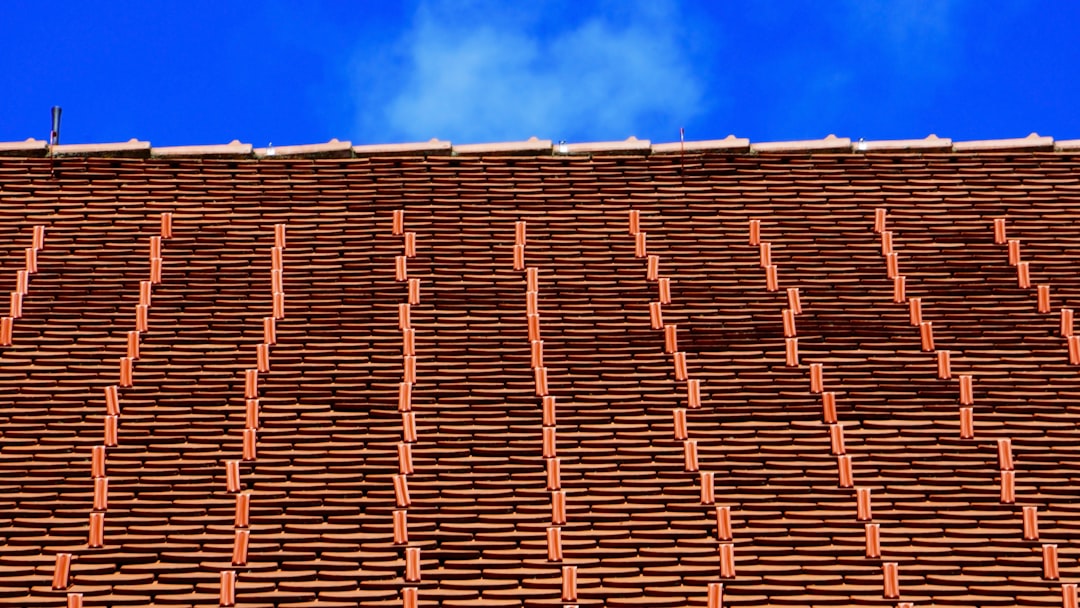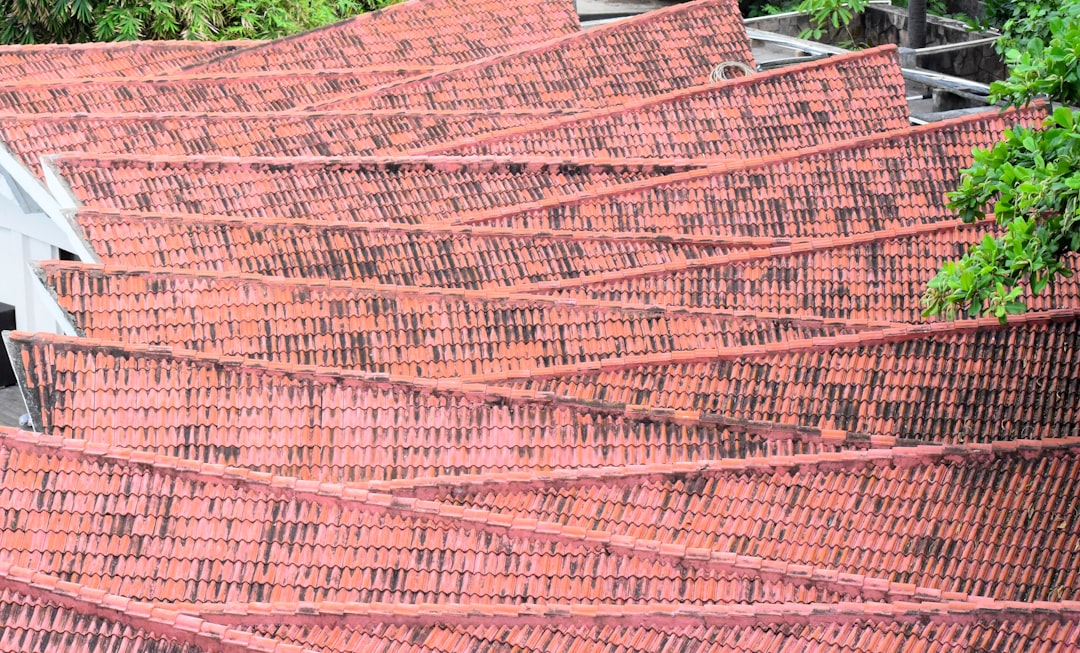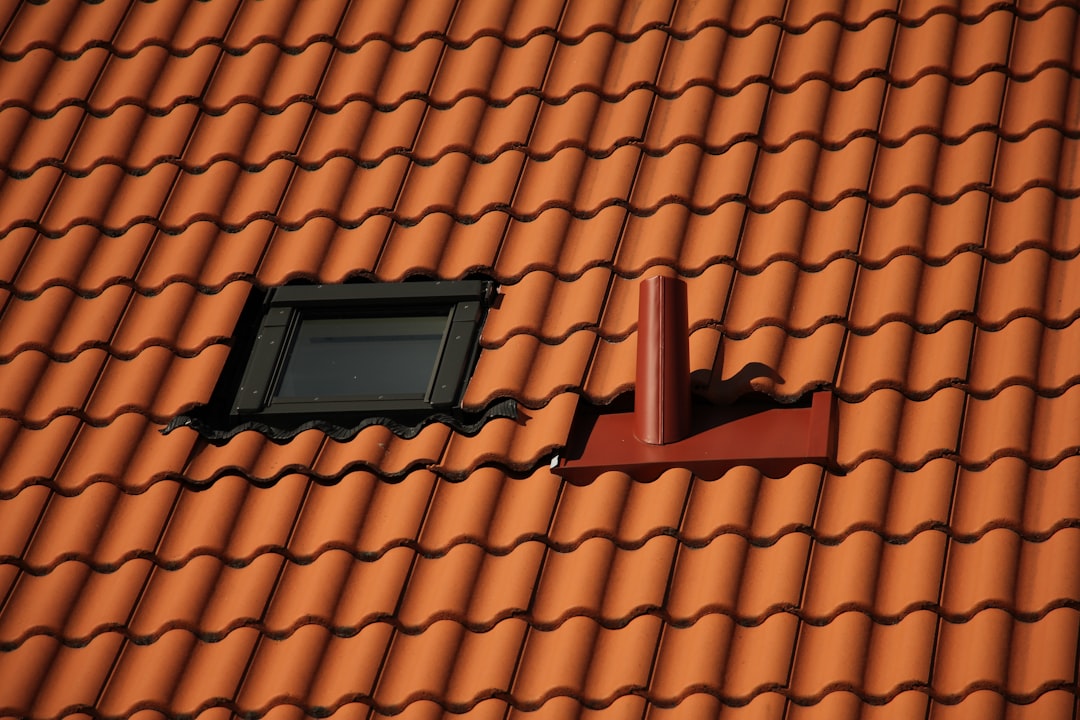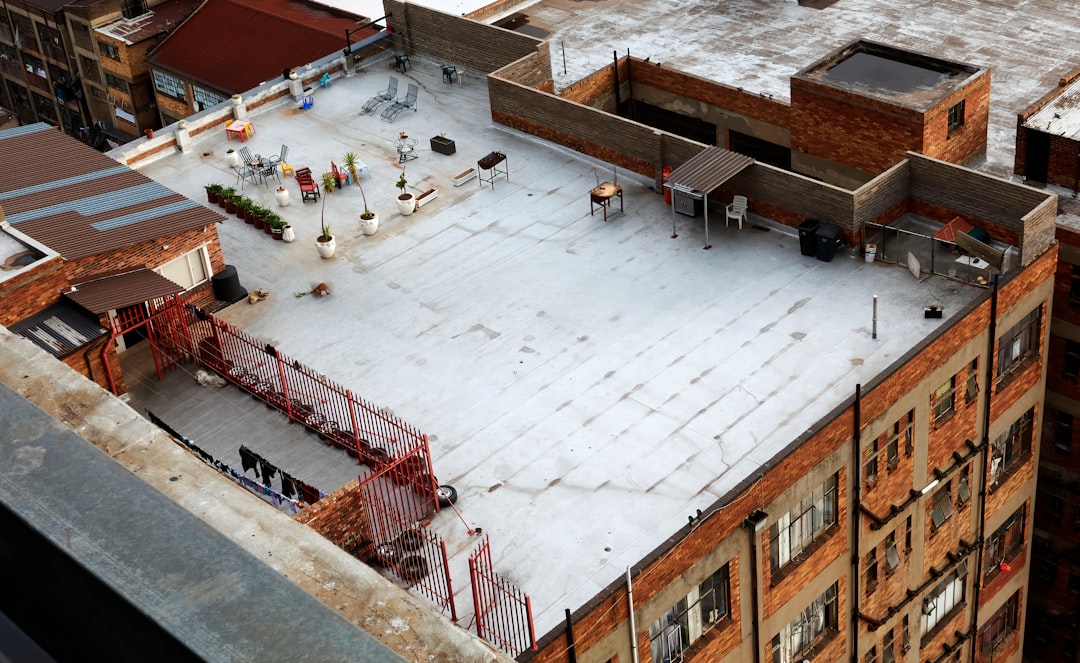

Engage prospects with a scan and streamline customer engagement with FREE QR code marketing tools by Sona – no strings attached!
Create a Free QR CodeFree consultation

No commitment

Engage prospects with a scan and streamline customer engagement with FREE QR code marketing tools by Sona – no strings attached!
Create a Free QR CodeFree consultation

No commitment
Tile roofing contractors operate in a market where every lead counts and customer conversions are critical to business growth. Yet many professionals struggle to bridge the gap between offline interest and actionable digital engagement. Too often, promising prospects picked up via flyers, event booths, or yard signs slip through the cracks because their interest is not tracked when it peaks or because there is no frictionless way for them to take the next step.
QR codes offer a powerful bridge between physical marketing and digital conversion. Imagine a homeowner casually picking up an estimate flyer or seeing a maintenance brochure; previously, this might result in interest that fizzles simply because entering a website manually felt like one step too many. With a quick scan, QR codes now empower homeowners to instantly request appointments or explore visual galleries, eliminating lost opportunities and reducing the risk of missed follow-up.
This guide explores practical strategies for integrating QR codes across every homeowner touchpoint to ensure high-value prospects are captured, tracked, and nurtured. When used alongside a well-designed digital workflow, QR technology makes the journey from initial curiosity to signed contract seamless, supports strong marketing ROI with actionable data, and helps contractors stay ahead in a competitive field where speed and personalized response are essential.

Tile roofing contractors often miss out on high-potential leads. Prospects explore brochures or event handouts, but without a timely, tangible way to act, these contacts rarely make it into CRMs or nurture flows. This leaves significant revenue on the table as engagement intent goes uncaptured and competitors step in to claim the opportunity.
Start by replacing outdated analog steps with QR-enabled actions that are easy to complete on a mobile device. Instead of paper estimate forms, let a scan open a prefilled inquiry form; instead of phone numbers buried on brochures, let a scan start a text conversation with your office. That single change transforms passive interest into trackable engagement and accelerates the path to a quote request.
By adopting QR-enabled lead capture and integrating scan data with your CRM, you gain visibility into which campaigns and placements generate the best prospects. Over time, this insight helps refine budget allocation and consistently improve return on marketing investment.

Tile roof projects often involve higher ticket values, longer consideration cycles, and an information-heavy decision process. Homeowners want proof of workmanship quality, tile options, warranty terms, and maintenance guidance. The problem is that traditional print materials rarely include a clear next step that is easy to take on the spot. A flyer pinned to a community board or a yard sign may spark interest, but contractors seldom know who engaged or how to follow up, which results in lost prospects. See examples for roofers.
QR codes close the offline-to-online gap by making every physical asset actionable. With a quick scan, a homeowner can view before-and-after galleries, explore a roof style selector, book a free inspection, or message your team. Every scan provides useful context, such as time and placement, so you can understand where interest originated and how to prioritize follow-up. Dynamic QR platforms make this even more powerful because destinations can be updated after printing, campaigns can be A/B tested, and scans can be attributed by source without reprinting materials.
QR technology also supports a faster response loop. When a homeowner scans a code on a jobsite sign to review a neighbor’s project, your system can instantly trigger a text offering next-day availability for an inspection. Being the first to follow up is often the deciding factor in winning tile installs, replacements, or repairs.

Many contractors struggle to align offline materials with digital tracking, which leads to an incomplete picture of campaign performance. Flyers and signage can raise awareness, yet without knowing which piece or channel drives conversion, improving results becomes trial and error. Selecting the right QR format for each touchpoint solves this issue.
Match the action you want with the best QR destination and format. For inquiries that require contact details, use forms. For sales team accessibility, vCards work well. For education and upsell opportunities, PDFs and galleries excel. Dynamic QR codes are recommended for most marketing uses because they allow easy updates and detailed analytics.
With a centralized platform like Sona QR, you can create, manage, and track each of these formats from a single dashboard while keeping destinations editable over time.

In tile roofing, interest often begins offline. A homeowner spots a project in their neighborhood, receives a storm-readiness postcard, or picks up a brochure at a home show. Without a simple next step, that interest fades. QR codes transform those moments into measurable actions and pipeline growth. Explore more roofing marketing ideas.
Focus on placements where your brand already appears and where prospects are most likely to act. Then pair each placement with a clear CTA that aligns to the context. For example, a yard sign might say “Scan to see this roof’s tile and color,” while an invoice might say “Scan to schedule a maintenance check.”
Targeting these touchpoints expands your opportunity pipeline without dramatically increasing spend. You are simply making every existing surface an entry point to an immediate, trackable next step.
Fragmented follow-up is a chronic issue for contractors. A homeowner might spend time reviewing case studies or comparing tile types, yet never convert because the next step feels inconvenient. QR codes reduce that friction by aligning specific touchpoints to the right digital actions. For roofing-specific ideas, see marketing for roofing companies.
Consider three highly effective use cases that map to common homeowner interactions. Each can be launched quickly, tested in the field, and scaled if results are strong.
Each use case transforms a passive encounter into a proactive step toward conversion. Over time, the data from these scans reveals which content, offer, and placement combination consistently drives the best outcomes.
Every scan is an intent signal. The destination a homeowner chooses and the context around the scan reveal where they are in the buying journey and what they care about. See Sona’s blog post Essential Guide to Intent Data for deeper insight into activating these signals.
Use dynamic codes tagged by location, content, and channel. Then sync scans to your CRM and ad platforms to create behavior-based audiences. Instead of retargeting everyone with the same messaging, you can differentiate between someone who viewed a gallery and someone who booked a consultation. For tactics, see Sona’s Playbook on intent-driven retargeting.
This approach transforms anonymous offline interest into actionable lists you can nurture with the right message at the right time. The result is more efficient ad spend, higher response rates, and faster movement through the funnel.
Many contractors treat print and digital as separate worlds, which results in missed attribution, delayed follow-up, and inconsistent messaging. QR codes unify channels by turning every surface into an onramp to your digital experience, where behavior can be measured and action can be automated. For broader strategy, see Sona’s blog on offline attribution.
When you align physical assets with QR-enabled destinations and a CRM-backed workflow, you create a closed loop. Print generates scans; scans trigger journeys; journeys create bookings; bookings generate new projects and more surfaces for QR. Over time, this flywheel improves both revenue and insight.
A centralized platform such as Sona QR helps you manage codes across all these channels, monitor performance in real time, and sync scan data with your CRM and ad platforms for coordinated follow-up.
Launching QR initiatives without a clear plan can lead to weak attribution and wasted effort. A structured process keeps your focus on measurable outcomes and ensures scans convert to sales activity.
Below is a five-step approach you can replicate for any tile roofing campaign. Use it to align your team on goals, testing, and follow-up before you print a single piece of collateral.
Select a specific problem or growth opportunity tied to a business outcome. Examples include reducing missed leads from event handouts, converting jobsite curiosity into booked inspections, or increasing maintenance plan sign-ups ahead of storm season.
Define success criteria for the use case. You might aim to lift scan volume in a target neighborhood, increase form submissions from yard signs, or reduce time to appointment after a scan. Clear goals help you choose the right placements, destination pages, and follow-up logic.
Choose dynamic QR codes for most marketing activities. Dynamic codes allow you to update destinations post-print, run A/B tests, and capture analytics like scan source and device. Static codes are suitable for unchanging assets such as permanent safety guides or a single evergreen brochure PDF.
Confirm data needs before you finalize the type. If you plan to retarget scanners or run location-based analysis, dynamic codes managed in a platform like Sona QR will save time and unlock deeper insights.
Treat QR as a call to action, not just a symbol. Add a benefit-driven headline like “Scan for a free tile roof inspection,” use high contrast for the code and frame, and maintain adequate white space. Recommended minimum sizes vary by distance to the viewer; for yard signs, larger codes and clear instructions are essential.
Test for scannability in real-world conditions. Check multiple devices, angles, and lighting scenarios, including direct sunlight and reflective surfaces common on laminated prints. Confirm that the destination page is mobile-friendly, fast to load, and aligned with the promise near the code.
Start with placements where interest is already high but tracking is weak. Yard signs, door hangers, mailers, trade show displays, and vehicle wraps are prime candidates. Pair each placement with a context-specific CTA. For example, use “Scan to see this exact tile and color” on a project banner and “Scan to book your inspection” on a postcard.
Roll out in phases so you can measure what works. Deploy to a few neighborhoods or events first, monitor scans and conversions, then scale winning variants. Keep creative and CTAs consistent across assets within a campaign to reinforce recall.
Instrument your campaign with analytics. Use Sona QR or a similar platform to track scans by time, location, and device. Append UTM parameters to destinations so web analytics attribute traffic to the right source and medium.
Review conversion flow and remove friction. If scans are high but forms underperform, shorten fields or offer a call-back option. If specific placements lag, test new CTAs, adjust code size, or refine contrast. Iterate based on live data rather than assumptions.
One of the most common blind spots is the inability to connect offline interest, like a scan at a home show, to downstream revenue. Without full-funnel visibility, it is difficult to optimize budget allocation, understand which messages resonate, or identify upsell opportunities post-installation.
Modern QR analytics provide the connective tissue you need. By capturing scan events and tying them to actions such as form fills, calendar bookings, or content downloads, contractors can see exactly which campaigns and placements influence pipeline and closed-won revenue.
With Sona QR and Sona, you can go further by unifying identity across sessions, linking scans with website visits and ad clicks, and attributing revenue with multi-touch models. This makes QR a core component of performance marketing rather than a standalone tactic.
Once your initial QR campaigns are live, you can unlock more value by standardizing best practices across placements and teams. Small improvements in design, messaging, and follow-up can compound into significant gains in scan rates and conversions. For broader context in the construction industry, explore how QR codes complement other on-site tactics.
Align your internal processes as well. Field staff and estimators should understand the purpose of each code and how to explain the benefit to homeowners. Marketing should monitor performance regularly and share findings with sales to inform canvassing routes and messaging.
Practical deployment ideas include adding QR codes to warranty cards for easy service requests and placing codes on estimate PDFs so homeowners can reopen their quote status and schedule next steps. Each added touchpoint compounds your ability to capture and nurture intent.

The best QR campaigns focus on solving the persistent problem of missed high-value prospects by making the next step immediate and appealing. Below are examples that show how contractors can connect offline signals with digital nurturing and measurable outcomes.
Think about each example in terms of the data you would collect and how you would act on it. The goal is to design campaigns where a scan is not just a visit, but a trigger for a well-orchestrated follow-up that builds trust and momentum.
These examples are simple to implement but powerful in effect. They turn everyday marketing assets into measurable growth engines and shorten the path from curiosity to contract.
Tile roofing campaigns can underperform for predictable reasons. Codes get buried in clutter, landing pages do not match the promise, or follow-up is slow. By addressing these pitfalls proactively, you minimize wasted spend and maximize the impact of each scan.
Design matters as much as placement. A large, high-contrast code paired with a compelling, benefit-focused headline will outperform a small, unframed code every time. The destination must be fast, mobile-friendly, and specific to the homeowner’s context, otherwise interest will fade before the form is complete.
When these fundamentals are in place, QR becomes a durable asset in your marketing stack. It amplifies every channel, generates richer data, and supports a faster path to revenue.
For tile roofing contractors, QR codes are not just digital shortcuts; they address long-standing pains in lead capture, engagement visibility, and conversion speed. By transforming each printed asset or physical touchpoint into a gateway for timely, actionable, and tracked interaction, contractors can finally seize opportunities that analog marketing tends to miss, whether that is surfacing hot leads before competitors, intervening at the first sign of churn, or nurturing post-installation upsell paths.
The industry has reached a point where actionable data and integrated workflows are no longer a luxury but a necessity. By leveraging the right QR-enabled strategies and a platform like Sona QR to manage, measure, and optimize your campaigns, you can unify the homeowner journey, discover new growth opportunities, and ensure that every interaction, online or offline, contributes measurable value to the bottom line. If you are ready to start, Start creating QR codes for free, connect them to your CRM, and make your next jobsite sign, postcard, or brochure a direct onramp to revenue.
QR codes have revolutionized the tile roofing contractors industry by turning traditional marketing into a dynamic, measurable path to increased customer acquisition and enhanced client engagement. Whether it’s simplifying quote requests, showcasing project portfolios, or providing instant access to reviews and warranties, QR codes transform static materials into powerful conversion tools that drive real business growth. Imagine instantly knowing which flyers, signage, or vehicle wraps are generating leads—and being able to optimize your campaigns on the fly.
With Sona QR, you gain the ability to create dynamic, trackable QR codes in seconds, update your campaigns without the hassle of reprinting, and directly link every scan to tangible revenue. No more guesswork—just clear insights and smarter marketing that turns every interaction into a potential contract. Start for free with Sona QR today and watch your tile roofing business build stronger connections and close more deals with every scan.
QR codes bridge offline marketing and digital engagement by allowing homeowners to instantly access estimates, galleries, or book appointments, which helps capture high-value leads, track engagement, and accelerate conversions.
Contractors can replace analog steps with QR-enabled forms, embed codes on signage and mailers, offer tools like inspection requests or project galleries behind scans, and connect scan data to automated follow-up through CRM systems.
Dynamic QR codes are recommended for most uses as they allow updates and analytics; common formats include web links to galleries or calculators, vCards for contact sharing, PDF downloads for maintenance guides, forms for inspection requests, and SMS or email for quick messages.
Effective placements include yard and jobsite signs, homeowner mailers, trade show booths, invoices and warranty materials, vehicle wraps, and uniforms to convert passive interest into trackable actions.
QR codes capture scan events with details like time and location, enabling attribution of offline campaigns to leads and revenue, syncing data with CRMs, and providing insights for optimizing budget and messaging.
They should choose a clear use case with goals, select the appropriate dynamic QR code type, design and test the code for scannability, deploy across high-impact channels with specific CTAs, and track and optimize performance using analytics.
By using unique codes per asset, adding UTM parameters, automating immediate follow-up, educating teams on QR benefits, testing creative CTAs regularly, and keeping destination content current and mobile-friendly.
Avoid placing codes in cluttered areas, linking to irrelevant or slow-loading pages, neglecting timely follow-up, failing to explain data privacy, and skipping thorough testing under real-world conditions.
While the article focuses on marketing strategies, contractors can find reputable tile roofing contractors by looking for professionals who use modern lead capture methods, have strong online portfolios accessible via QR codes, and demonstrate timely follow-up and customer engagement.
The article does not specify the lifespan or maintenance details of tile roofs but suggests that contractors provide maintenance guides and warranty information accessible digitally via QR codes to help homeowners ensure roof longevity.
The article does not provide specific cost information for tile roof installation but recommends using QR codes to direct homeowners to cost guides and financing options for better research and decision-making.
Use Sona QR's trackable codes to improve customer acquisition and engagement today.
Create Your FREE Trackable QR Code in SecondsJoin results-focused teams combining Sona Platform automation with advanced Google Ads strategies to scale lead generation

Connect your existing CRM

Free Account Enrichment

No setup fees
No commitment required

Free consultation

Get a custom Google Ads roadmap for your business






Launch campaigns that generate qualified leads in 30 days or less.
